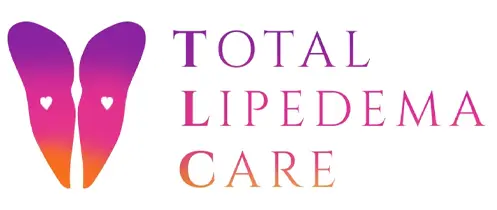Lipedema patients usually endure pain, discomfort, and circulation issues when coping with this disease daily. This painful, progressive disorder hinders millions of women in this country. Often overlooked as a weight problem, lipedema is much more.
For some patients, lipedema can become a debilitating condition without surgical intervention. Surgeries such as liposuction help treat lipedema by removing excess fatty tissue. Liposuction treatments are one of the known surgical options that give women with this disease the relief they need.
Total Lipedema Care and Dr. Jaime Schwartz
Dr. Jaime Schwartz, a board-certified plastic surgeon and lipedema specialist, founded Total Lipedema Care (TLC) in Beverly Hills, CA. His practice offers:
- Emotional support for patients coping with lipedema.
- Nonsurgical treatment options to help manage symptoms.
- Surgical interventions, including lymphatic-sparing liposuction, to offer long-term relief.
Liposuction for Lipedema: An Overview
One of the most popular cosmetic surgeries performed, liposuction reshapes target areas for aesthetic results and relieves painful symptoms associated with certain diseases like lipedema.
A specialist in this disease, Dr. Schwartz can determine the severity of the issues affecting the target areas and if liposuction may help. It may take more than one liposuction treatment in different areas to give patients relief.
Lymphatic sparing liposuction is performed to help assist the body in treating fat caused by lipedema. It enhances the effectiveness of the vascular and lymphatic system, which are two areas under volatile stress among lipedema patients.
Dr. Schwartz performs this primary treatment as a medical necessity generally on the buttocks, abdomen, hips, thighs, calves, and in some instances, the arms. It can also share patients with desired cosmetic help in those target areas as well.
A Brief Look at Liposuction
Liposuction for lipedema has the same general incision points as a cosmetic liposuction treatment. Using an instrument called a cannula, Dr. Schwartz will gently remove excess fat and contour the target area by utilizing the SAFE method.
Recontouring with liposuction promotes better mobility and vascular health for lipedema patients. The incisions for lipedema liposuction are also typically left open to encourage further drainage.
Liposuction for Lipedema
For liposuction treatments in patients with lipedema, Dr. Schwartz uses tumescent fluid and the SAFE technique (Separation, Aspiration, and Fat Equalization). Lipedema patients have “fluid-filled” fat that has built up in specific target areas.
Dr. Schwartz treats his lipedema patients with a particular technique to decrease the congestion and inflammation while helping with abnormal body contours that have developed. This less invasive approach still gives women excellent results on the affected extremities, but patients feel better after the procedure and have a smoother recovery.
At Total Lipedema Care, Dr. Schwartz will use his patented Schwartz Rapid Recuperation method. The TIVA (total intravenous anesthesia) method of general anesthesia is gentler but effective. It also allows the body to start the recovery process sooner versus other general anesthesia methods that linger in the body for days after surgery.
TIVA means patients are asleep and breathing on their own. Lipedema patients recover faster from their liposuction procedure since TIVA wears off in just hours after surgery.
Recovery from Lymphatic Sparing Liposuction
Each patient has their own set of lipedema conditions and symptoms; therefore, every patient’s recovery is different. A patient’s recovery varies by how many target areas are treated and the severity of each plus how fast a patient’s body heals after surgical procedures. Most patients can return to work in 1-2 weeks and fully get back to normal activities in 4-6 weeks.
Here are important tips on recovering from a liposuction procedure to treat lipedema:
Follow Post-Operation Instructions
Dr. Schwartz will give detailed aftercare instructions. Follow-up appointments are also necessary. Dr. Schwartz will closely monitor the healing process for each of his patients, so it is important to follow the instructions and attend each appointment.
The post-operative instructions are usually tailored to each patient’s health history and pertain to their surgical procedure. It will include important information about pain management, wound care, and what medications to avoid during the healing process.
Compression Garments are Necessary
Lymphatic sparing liposuction removes excess fluid buildup. Compression garments are medical devices and an extension of the healing process. When worn as directed, they alleviate fluid buildup and help manage lipedema symptoms after liposuction.
Rest and Get Some Movement
While getting plenty of rest after your liposuction procedure is essential, it’s also important to move around. Your body needs time to heal, but gentle movement such as walking helps promote circulation and supports recovery. Light walking will reduce the risk of blood clots and reduce any swelling due to an increase in circulation.
Also, be patient with your results. It takes weeks if not months for the full effects of your liposuction treatments to take hold, so try not to get discouraged.
Working closely with a board-certified plastic surgeon who is experienced in liposuction, as well as a lipedema specialist like Dr. Schwartz, is fundamental. Liposuction treatment for patients who are in the most severe stages of lipedema helps to take some of the pressure off the body.
It can also alleviate painful symptoms that are caused by this condition while making women feel better about how they look. If you are concerned that you may have lipedema or are seeking lipedema treatment options, we encourage you to contact TLC and schedule a consultation with Dr. Jaime Schwartz today.


